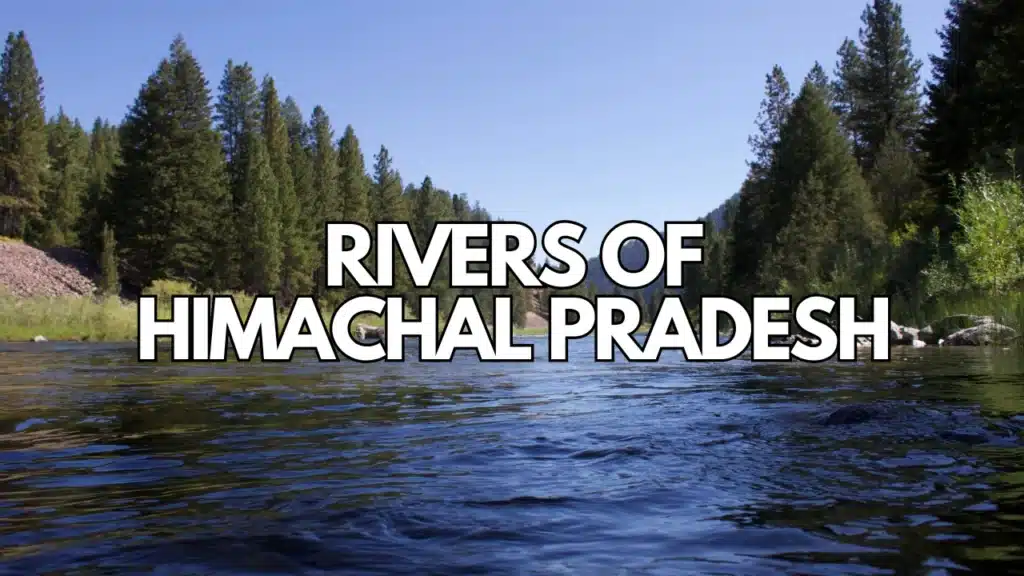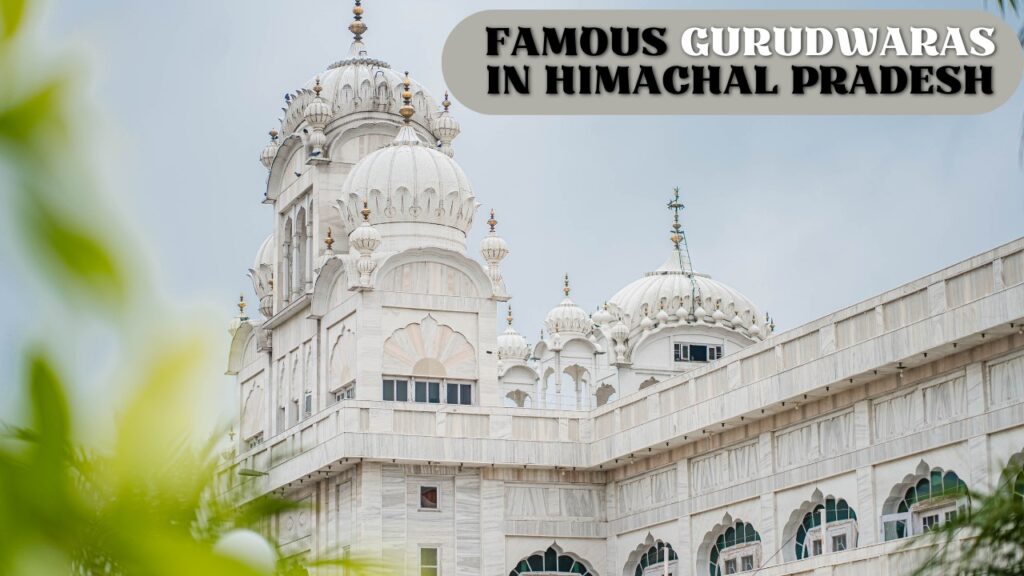Himachal Pradesh is home to some of the most significant rivers in northern India, carving out deep valleys and shaping its diverse landscape. These life-giving rivers not only support the local ecosystems but are vital for agriculture, hydropower, and daily life.
The main rivers of Himachal Pradesh include the Beas, Chenab, Ravi, Sutlej, and Yamuna, each contributing uniquely to the region’s geography and economy. Their origins often lie in the glaciers of the Himalayas, feeding into larger river systems downstream.
Exploring these rivers reveals much about Himachal Pradesh’s natural beauty and strategic importance. Understanding their course and uses helps explain how the state manages its water resources amid growing demand and environmental concerns.
Table of Contents
ToggleMajor Rivers of Himachal Pradesh
Himachal Pradesh is home to several important rivers that significantly influence its geography, agriculture, and hydroelectric projects. These rivers originate in the Himalayan ranges and contribute to major river systems across northern India and neighbouring countries.
Satluj River
The Satluj River is the longest river flowing through Himachal Pradesh. It enters the state near Shipki La pass and flows through the districts of Kinnaur and Shimla before entering Punjab. It is a major tributary of the Indus River.
The Satluj is crucial for hydroelectric power generation, with several dams such as the Bhakra and Nathpa Jhakri located on its course. The river also supports irrigation in the downstream plains. Its fast-flowing waters and steep gradient make it ideal for energy projects and contribute to the region’s economy.
Beas River
Originating from the Beas Kund near Rohtang Pass, the Beas River traverses through the Kullu and Mandi districts. It is a prominent tributary of the Indus basin, joining the Sutlej River in Punjab.
The Beas is important for irrigation and hydroelectricity. The Pong Dam, built on the Beas, is one of the largest reservoirs in Himachal Pradesh and supports both agriculture and fisheries. Its valley is densely populated and rich in flora and fauna, making it vital for local livelihoods and biodiversity.
Ravi River
The Ravi River begins in the Himalayas near Bara Bhangal in Kangra district. It flows through Kangra and Chamba districts before crossing into Pakistan. It is one of the five rivers of Punjab.
The Ravi supports irrigation through canal systems in Himachal Pradesh and Punjab. Its waters are partly harnessed for hydroelectricity. Seasonal variations cause the river to flood at times, affecting agriculture but replenishing soil fertility. The river valley also holds several cultural and historical sites.
Chenab River
The Chenab River rises from the confluence of the Chandra and Bhaga rivers in Lahaul and Spiti district. It flows through rugged mountain terrain before entering Jammu and Kashmir. The Chenab eventually joins the Indus River.
It has significant hydroelectric potential, utilised by projects like the Dulhasti and Salal dams downstream. The river’s tributaries nourish valleys in the region while shaping a diverse landscape. It plays a key role in supporting the water needs of northern India and the adjoining areas of Pakistan.

Tributaries and Lesser-Known Rivers
Himachal Pradesh has several rivers that play important roles despite being less prominent. These watercourses serve ecological functions and support local communities.
Parvati River
The Parvati River originates from the high-altitude glaciers of the Pin Parvati range. It flows through narrow valleys, especially the Parvati Valley, which is a popular trekking destination. The river supports agriculture and hydropower projects in the region.
The Parvati River joins the Beas River near Bhuntar. Its water quality is generally good, but tourism and small-scale industries have begun to impact it. The river is also culturally significant, with several temples along its banks.
Pabbar River
The Pabbar River rises from the Shivalik Hills and flows through the Shimla district. It is a tributary of the Tons River, which further merges with the Yamuna.
Pabbar supports irrigation for several villages. Known for its clean waters, it also attracts adventure seekers for activities like river rafting and angling. The river holds potential for small hydroelectric projects due to its fast-flowing nature.
Spiti River
The Spiti River emerges from the Kyelang region in the Lahaul and Spiti district. Running through the cold desert area, it is fed mainly by glacier melt.
The river’s valley is sparsely populated but rich in Tibetan Buddhist culture. Spiti merges with the Sutlej River near Khab. Due to its remote location, the river remains relatively undisturbed by pollution, supporting unique flora and fauna.
River Basins and Drainage Systems
Himachal Pradesh features two major river basins that significantly impact its hydrology and agriculture. These basins govern the flow patterns, water availability, and the livelihood of millions in the region. Understanding their characteristics helps in managing water resources effectively.
Indus Basin
The Indus Basin covers the north-western part of Himachal Pradesh. It primarily includes important tributaries like the Chenab, Ravi, and parts of the Sutlej River. The basin’s terrain is rugged with deep valleys, resulting in fast-flowing streams.
The Chenab originates from the upper Himalayan regions of Himachal and Ladakh. This river is crucial for hydroelectric power and irrigation downstream. The Sutlej, flowing from Lake Rakshastal in Tibet, passes through Kinnaur and contributes to the basin’s water volume.
This basin plays a vital role in supporting agriculture and hydropower projects. The drainage is largely snow-fed, with peak flows in summer due to melting glaciers. Flooding occurs during the monsoon but is moderated by natural riverbanks and hydropower reservoirs.
Ganga Basin
The Ganga Basin covers the southern and central parts of Himachal Pradesh. It mainly comprises the Beas and Yamuna rivers. These rivers originate from high-altitude glaciers, influencing the basin’s flow regime and water availability.
The Beas rises from the Himalayas near Rohtang Pass and flows through Kullu and Mandi districts. Its waters support extensive irrigation and hydroelectric schemes. The Yamuna begins from the Yamunotri Glacier, flowing through the south-eastern part of the state.
This basin’s drainage system is characterised by a combination of snowmelt and rainfall. It receives heavy monsoon rains, which cause seasonal variations in river discharge. Water from these rivers supports agriculture, drinking needs, and hydroelectric projects within Himachal and downstream states.
| Feature | Indus Basin | Ganga Basin |
|——————|——————————-|——————————|
| Major Rivers | Chenab, Ravi, Sutlej | Beas, Yamuna |
| Water Source | Snow/glacier melt | Snow/glacier melt + monsoon |
| Terrain | Rugged valleys, fast streams | Mountainous, broad valleys |
| Usage | Hydropower, irrigation | Irrigation, drinking water |
Significance of Rivers in Himachal Pradesh
Rivers in Himachal Pradesh play a vital role in supporting biodiversity and sustaining human communities. They contribute to both environmental balance and cultural heritage in the region.
Ecological Importance
The rivers in Himachal Pradesh maintain diverse ecosystems, providing habitat for various aquatic and terrestrial species. They help regulate the local climate and support forests by supplying essential water throughout the year.
These water bodies feed into major river basins like the Sutlej, Beas, and Chenab, which are crucial for agriculture and hydropower generation. The continuous flow of glacial meltwater from the Himalayas ensures year-round water availability.
Rivers also prevent soil erosion along steep mountain terrains. Wetlands and riparian zones linked to these rivers act as natural water filters, preserving water quality for both wildlife and human use.
Cultural and Historical Influence
Rivers in Himachal Pradesh hold strong cultural significance and are often regarded as sacred in local traditions. Many temples and pilgrimage sites are situated along riverbanks, attracting thousands of visitors annually.
The Beas and Ravi rivers feature prominently in ancient texts and folklore. Rituals, festivals, and ceremonies frequently involve these rivers as symbols of purity and life.
Historically, rivers facilitated trade and communication between valleys and distant regions. Their presence has shaped settlement patterns and contributed to the development of local economies over centuries.
Human Impact and Conservation Efforts
Rivers in Himachal Pradesh face challenges from infrastructure development and pollution. Efforts are underway to balance energy needs with environmental protection and control contamination through monitoring and clean-up drives.
Hydropower Projects
Himachal Pradesh has numerous hydropower plants utilising its river systems, particularly on the Beas, Sutlej, and Ravi rivers. These projects contribute significantly to the state’s electricity supply but alter river flow and affect aquatic ecosystems.
Large dams cause sediment build-up and disrupt fish migration. To mitigate impacts, authorities enforce environmental flow regulations and conduct impact assessments before construction. Small hydropower plants with lower ecological footprints are preferred in sensitive areas.
The government promotes run-of-the-river projects that avoid large reservoirs. Such projects reduce landscape flooding and maintain river health while producing power. Continuous monitoring ensures compliance with environmental standards.
River Pollution and Management
Pollution in the rivers of Himachal Pradesh comes from domestic waste, agricultural runoff, and construction activities. Increased tourism has also contributed to littering and sewage discharge in river areas.
Water quality monitoring stations detect contaminants like nitrates, phosphates, and faecal coliforms. Local administrations implement solid waste management and promote sewage treatment plants to reduce pollution at source.
Community participation plays a crucial role in maintaining river cleanliness. Awareness campaigns educate residents and tourists on waste disposal, while river clean-up programmes remove plastic and debris. Authorities aim to improve water quality to support biodiversity and human health.
Water Sports Adventure
The rivers of Himachal Pradesh, besides the serene landscapes, are also known for adrenaline-pumping adventures. If you’re drawn to water sports and nature-based activities, this state is a treasure trove. Its rivers offer ideal conditions for various water sports throughout the year. Here’s a look at some of the most exciting and peaceful outdoor experiences you can enjoy:
Boating
Boating enthusiasts can enjoy calm stretches on reservoirs like the Govind Sagar Lake, providing scenic views and relaxed paddling experiences. Some popular locations for boating are as under _
Gobind Sagar Lake (Bilaspur): A vast reservoir ideal for speed boating and paddle boating.
Chamera Lake (Chamba): Surrounded by pine forests, this lake offers tranquil boat rides with breathtaking views.
Pandoh Dam Reservoir: A lesser-known spot for peaceful boating experiences.
These lakes are perfect for families and couples looking to unwind amidst nature.
Angling
Himachal rivers are popular for angling, especially for trout fishing. Angling here is not just a sport—it’s a meditative experience in its pristine waters. The Tirthan River is well-known for its clear waters and abundant fish, attracting anglers from across the country. Other areas are:-
Beas River & Tirthan Valley: Known for brown and rainbow trout, these streams are a paradise for anglers.
Parvati & Sainj Rivers: Offer excellent sport fishing opportunities with mahseer and other native species.
Also Read – Your Ultimate Guide : Angling in Himachal Pradesh
Camping
Camping in Himachal blends rugged adventure with peaceful solitude. Sites along the Parvati and Baspa rivers offer safe zones for tents, allowing visitors to combine daytime water activities with overnight stays under the stars. The popular spots for camping are in these areas:-
Spiti Valley & Sangla: High-altitude camping with views of snow-capped peaks and starry skies.
Tirthan Valley: Ideal for riverside camping, often combined with angling and trekking.
Kasol & Manali: Popular spots for organised camps with bonfires, music, and adventure activities.
Bird Watching
Where there is water, there are birds. Birdwatching is another recreational activity for observing birds. Birds, however, prefer calm waters, especially lakes. Bird watching here is a delight for photographers and nature lovers alike. The popular spots are.
Pong Dam Wetlands: A Ramsar site hosting migratory birds like bar-headed geese and Siberian cranes.
Great Himalayan National Park (GHNP): Home to over 300 bird species, including monals, flycatchers, and pheasants.
Renuka Lake: A serene spot for spotting waterfowl and forest birds.
Kayaking and River Rafting
One water sport that has gained much popularity in the rivers of Himachal Pradesh is River rafting, which draws thrill-seekers from across the country. With gushing mountain rivers, dramatic landscapes, and a mix of rapids ranging from gentle to wild, Himachal offers the perfect setting for both beginners and seasoned rafters. The popular spots are as follows:-
Location | River | Rafting Stretch | Highlights |
|---|---|---|---|
Kullu-Manali | Beas River | Pirdi to Jhiri (~14 km) | Grade II–III rapids, scenic valleys |
Tattapani (Shimla) | Sutlej River | Sunni to Tattapani (12–20 km) | Hot springs nearby, Grade II–III rapids |
Chamba | Ravi River | Chamba to Ranjit Sagar Dam (~10 km) | Peaceful, less commercial |
Spiti Valley | Spiti River | Varies by season | Remote and rugged terrain |
Lahaul | Chenab River | Seasonal stretches | For experienced rafters |
Best Seasons for Outdoor Activities in Himachal Pradesh
Here’s a seasonal guide to the best time for water-based and nature adventures in Himachal Pradesh, tailored to each activity:
Activity | Best Season(s) | Why It’s Ideal |
|---|---|---|
Boating | April to June | Lakes are calm, the weather is pleasant, and visibility is excellent |
Angling | March to May, Sept to Nov | Trout and Mahseer are active; rivers are clear post-winter and post-monsoon |
Camping | April to June, Sept to Nov | Mild temperatures, clear skies, and lush landscapes |
Bird Watching | April to June, Sept to Nov | Migratory birds arrive; forests are vibrant and accessible |
River Rafting | April to June, Sept to Oct | Snow-fed rivers are full; monsoon risks are low |
Seasonal Highlights
Spring (March–April): Ideal for angling, bird watching, and early camping.
Summer (May–June): Peak season for boating, rafting, and camping.
Autumn (Sept–Nov): Great for angling, bird watching, and post-monsoon rafting.
Winter (Dec–Feb): Not suitable for water sports, but perfect for snow treks and skiing.
Safety Measures to Be Taken
Before participating in water sports and other adventure activities mentioned above, it is essential to prioritise safety to ensure a secure and enjoyable experience. Always wear appropriate safety gear such as life jackets and helmets, especially during rafting and boating. Check weather forecasts and river conditions in advance, as Himachal, being in a hill region, is prone to sudden weather changes, to avoid serious risks.
Ensure that you’re accompanied by certified guides or instructors who are familiar with the terrain and emergency protocols. For angling and bird watching, inform local authorities or forest departments about your plans, and carry a first-aid kit, insect repellent, and adequate hydration. Avoid venturing into restricted or unfamiliar zones without guidance, and be cautious of slippery rocks, strong currents, and wildlife encounters. Lastly, respect local regulations and environmental guidelines to preserve the natural beauty and safety of the region for everyone.
Also Read – Floods in Himachal Pradesh – Understanding the Crisis
To Sum Up
The rivers of Himachal Pradesh—like the Beas, Sutlej, Ravi, and Chenab—are not only lifelines for the region’s ecology and agriculture but also vital cultural and spiritual symbols woven into the fabric of local life. These pristine waterways fuel hydroelectric power, support biodiversity, and offer thrilling opportunities for adventure sports such as river rafting, angling, and kayaking, drawing nature lovers and adrenaline seekers alike. However, increasing tourism, pollution, and climate change pose serious threats to their health and sustainability. It is imperative to implement robust conservation efforts, including responsible tourism practices, waste management, and community-led river protection initiatives. Preserving these rivers ensures that future generations can continue to experience their beauty, vitality, and the exhilarating adventures they offer, while maintaining the delicate balance between nature and human activity.
Transfers, Rides and Deliveries in All Countries !





